Published in 2016 by Enslow Publishing, LLC
101 W. 23rd Street, Suite 240, New York, NY 10011
Copyright 2016 by Robert Gardner
All rights reserved.
No part of this book may be reproduced by any means without the written permission of the publisher.
Cataloging-in-Publication Data
Gardner, Robert.
Meteorology experiments in your own weather station / by Robert Gardner.
p. cm. (Design, build, experiment)
Includes bibliographical references and index.
ISBN 978-0-7660-6957-2 (library binding)
1. MeteorologyExperimentsJuvenile literature. 2. Meteorological stationsExperiments Juvenile literature. 3. Science projectsJuvenile literature. I. Gardner, Robert, 1929 II. Title. QC863.5 G36 2016
551.5078d23
Printed in the United States of America
To Our Readers: We have done our best to make sure all Web site addresses in this book were active and appropriate when we went to press. However, the author and the publisher have no control over and assume no liability for the material available on those Web sites or on any Web sites they may link to. Any comments or suggestions can be sent by e-mail to .
Portions of this book originally appeared in the book Meteorology Projects With a Weather Station You Can Build.
Illustration Credits: Jonathan Moreno; pialhovik/iStock/Thinkstock (graph paper background throughout book).
Photo Credits: Enslow Publishing, LLC
Cover Credits: Nastya22/Shutterstock.com (snowflake background); sam74100/iStock/ Thinkstock (young girl in parka).
Contents
Introduction
Science Fairs
The Scientific Method
Safety First
Chapter 1.Build Your Own Weather Station
 1-1Build a Thermometer
1-1Build a Thermometer
 1-2Your Weather Station Thermometer
1-2Your Weather Station Thermometer
 1-3Pressure from the Air
1-3Pressure from the Air
1-4Your Weather Station Barometer
 1-5Altitude and Air Pressure
1-5Altitude and Air Pressure
1-6Build a Rain Gauge
1-7Build a Wind Vane
1-8Measuring Wind Speed
 1-9Build a Hygrometer to Measure Relative Humidity
1-9Build a Hygrometer to Measure Relative Humidity
Chapter 2.Weather Data and Clouds
2-1Weather Data Collection
 2-2Dew Point Measurements
2-2Dew Point Measurements
2-3Making Predictions
 2-4Make a Cloud
2-4Make a Cloud
 2-5Expanding Gas
2-5Expanding Gas
2-6Water Vapor Rain
2-7Evaporation and Temperature
Chapter 3.Some Weather Science
3-1Where Does Wind Come From?
 3-2Winds and a Planets Spin
3-2Winds and a Planets Spin
 3-3Warming Air
3-3Warming Air
3-4Warm and Cold Air Meet
3-5A Model of Air Masses and Fronts
3-6Winds Both Onshore and Offshore
3-7Looking at Weather Maps
 3-8Forecast Comparisons
3-8Forecast Comparisons
Chapter 4.Weather, Climate, and Global Warming
 4-1A Model of the Greenhouse Effect
4-1A Model of the Greenhouse Effect
4-2Sea Level and Melting Ice
4-3A Carbon Dioxide Sink
4-4Global Warming and Icy Reflections
Appendix: Science Supply Companies
Further Reading
Web Sites
Index
Introduction
Do you like to follow weather forecasts? Are you interested in the science of weather? Once you build your own weather station, you can use it to collect the information that weather scientists or meteorologists use to predict the weather. The instruments you will build can also be used to do experiments. The experiments will help you learn the science needed to understand weather. You will learn how clouds form, why the wind blows, how to predict tomorrows weather, how gases are causing global warming, and much more.
Most of the materials you will need to build a weather station and do the projects and experiments in this book can be found in your home. Several experiments may require things that you can buy in a supermarket, a hobby or toy shop, a hardware store, or one of the science supply companies listed in the appendix. Some may call for items that you might borrow from your schools science department.
Occasionally, you will need someone to help you with an experiment that requires more than one pair of hands. It would be best if you work with friends or adults who enjoy experimenting as much as you do. Then you will both enjoy what you are doing. The instructions in this book will let you know if any danger is involved in doing an experiment. In some cases, to avoid any danger to you, you will be asked to work with an adult. Please do so. We do not want you to take any chances that could lead to injury.
Like any good scientist, you will find it useful to record your ideas, notes, weather data, and anything you can conclude from your experiments and weather records in a notebook. By so doing, you can keep track of the information you gather and any conclusions you reach. And you can refer back to experiments you have done, to help you with future projects.
You will not be the first person to track the weather. George Washington and Thomas Jefferson, our countrys first and third presidents, kept detailed weather records. But it was not until after messages could be sent long distances by telegraph in the 1840s that it became possible to track storms moving across the country. Today, satellites orbiting Earth give us weather data on a worldwide basis. Computers have made it possible to make scientific models of storms. These models help meteorologists as they forecast weather.
SCIENCE FAIRS
The projects in this book marked with a  symbol include ideas for a science fair. These ideas may be useful in preparing for your next science fair. However, judges at such fairs do not reward projects or experiments that are simply copied from a book. For example, a fluffy cotton model of a cloud would probably not impress judges. A report of an experiment to explain how raindrops form in a cloud would receive much more consideration than pieces of cotton glued to a blue background.
symbol include ideas for a science fair. These ideas may be useful in preparing for your next science fair. However, judges at such fairs do not reward projects or experiments that are simply copied from a book. For example, a fluffy cotton model of a cloud would probably not impress judges. A report of an experiment to explain how raindrops form in a cloud would receive much more consideration than pieces of cotton glued to a blue background.
Science fair judges tend to reward creative thought and imagination. However, it is difficult to be creative or imaginative unless you are really interested in your project, so choose something that appeals to you. Consider, too, your own ability and the cost of materials needed for the project.
If you decide to use a project or idea found in this book for a science fair, you will need to find ways to modify or expand the project. This should not be difficult because as you do these projects, new ideas for experiments will come to mind. These new experiments could make excellent science fair projects because they spring from your own mind and are interesting to you.
If you decide to enter a science fair and have never done so before, you should read one or more of the books listed in the Further Reading section. Some of these books are about science fairs. Those books will provide helpful hints and useful information. They will show you how to avoid the pitfalls that sometimes confront first-time entrants. You will learn how to prepare winning reports that include charts and graphs, how to set up and display your work, how to present your project, and how to talk to judges and visitors.

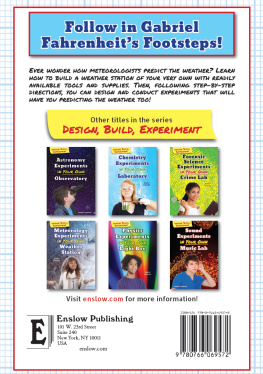

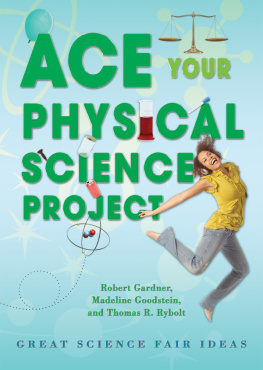

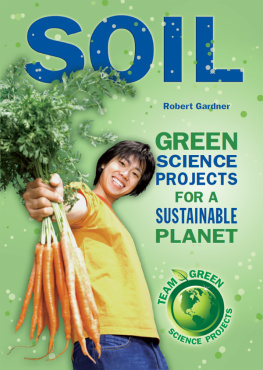
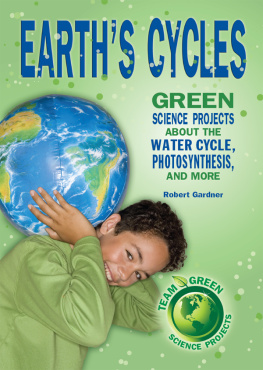
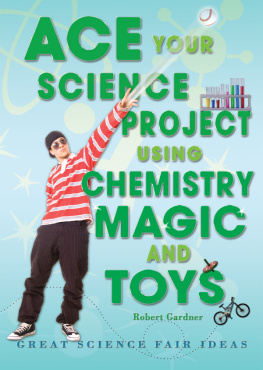
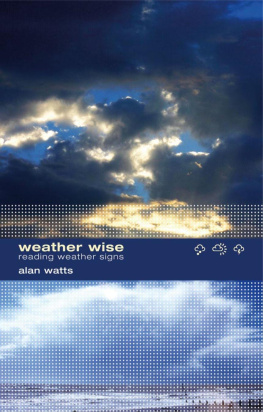

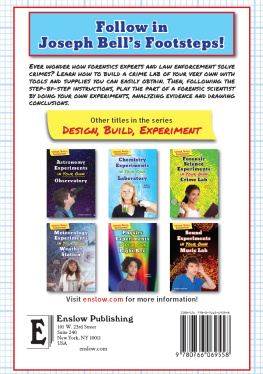



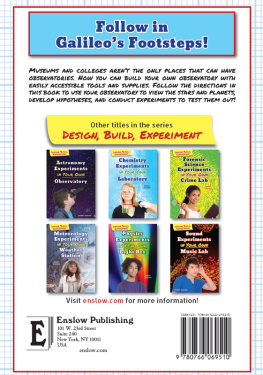

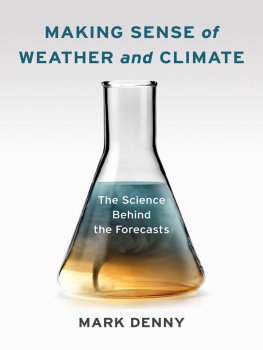


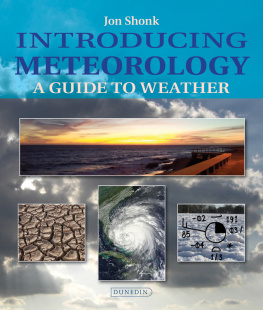

 1-1Build a Thermometer
1-1Build a Thermometer